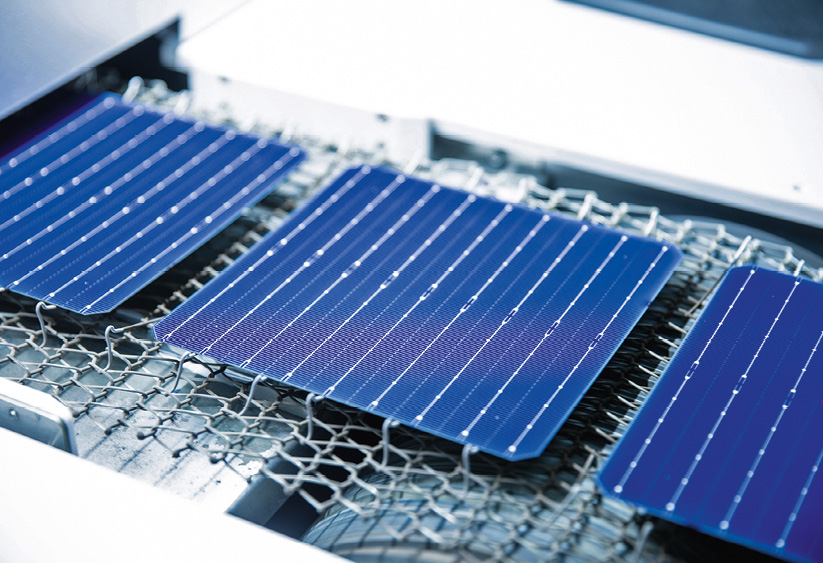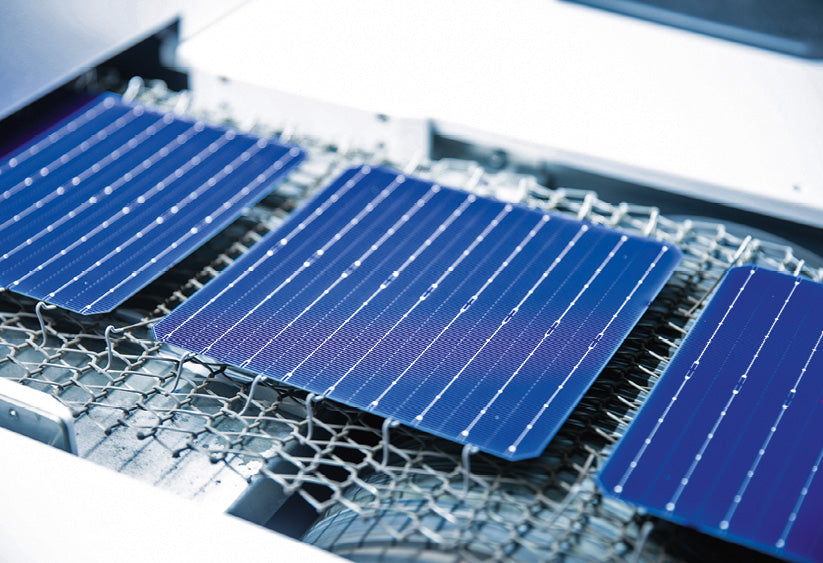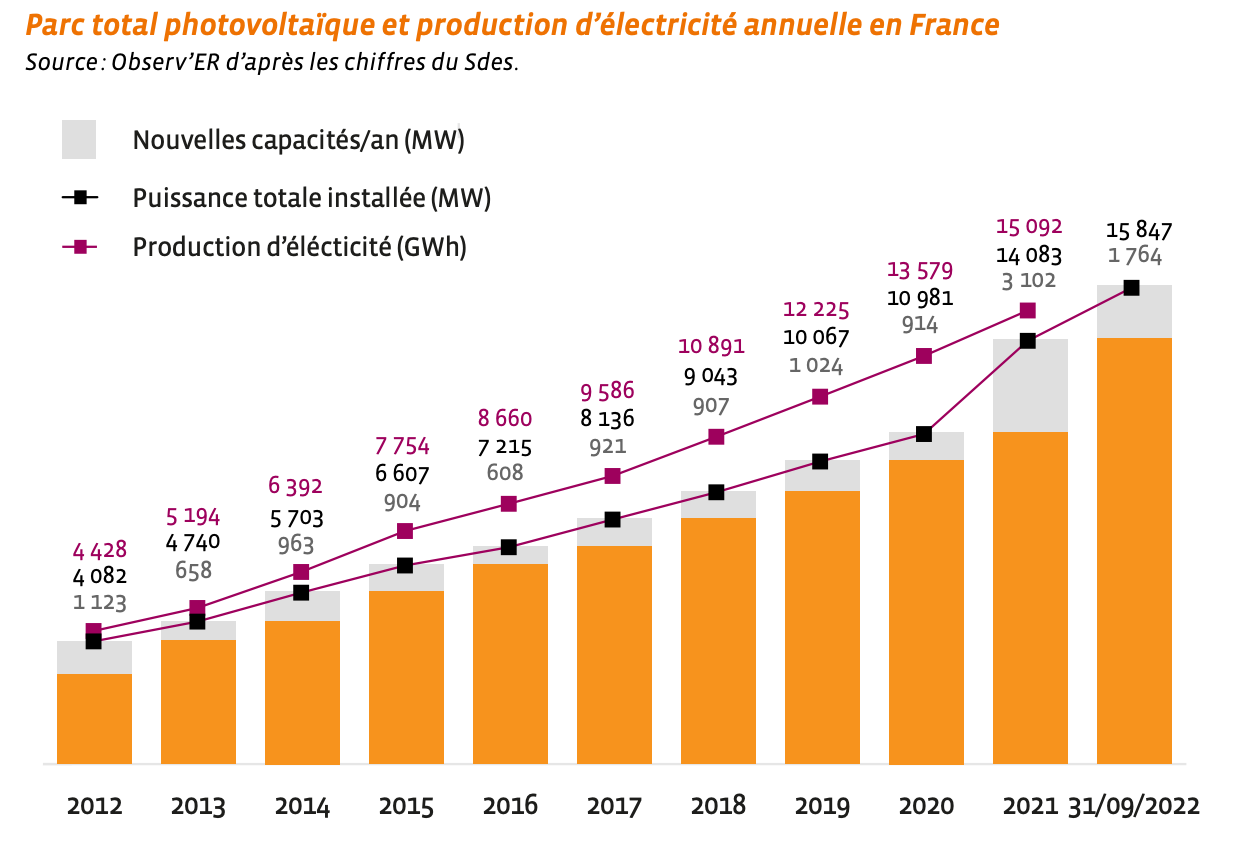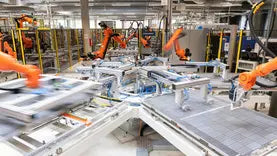https://www.pv-magazine.com/2023/01/26/falling-costs-15-gw-of-us-solar-module-production-topcon-trends/
Falling costs, 15 GW of US solar module production, TOPCon trends

Image: Longi Solar
From pv magazine USA
The US Inflation Reduction Act of 2022 contains $370 billion in spending for renewable energy and climate measures. The bill includes more than $60 billion for domestic manufacturing across the clean energy supply chain. This historic level of investment is key to achieving American manufacturing independence and clean energy security.
A recent report from Wood Mackenzie indicates that developers, engineering procurement construction (EPCs) companies, and manufacturers will be on the lookout for guidance from the US Treasury Department and the IRS for clarity in order to strategize new solar development and investment in new manufacturing facilities within the United States.
The report looks at trends in this burgeoning industry, including a focus on TOPCon modules over heterojunction (HJT), growth in the global residential inverter market, an expansion of tracker manufacturing, an expected drop in solar project costs and a look at challenges going forward.
TOPcon vs. PERC
TOPCon, which stands for tunnel oxide passivated contacts, is expected to outrace heterojunction (HJT), and the Wood Mackenzie report notes that mono PERC “is the technology that balances maturity and efficiency”, indicating that TOPCon has the highest growth potential due to process improvements and cost optimization.
“The PERC panel technology has also a very fast learning curve and the balance between them will depend on which one will be able to increase its efficiency or reduce cost faster than the other one,” Stefan Gunz, the head of photovoltaics research at Germany’s Fraunhofer Institute for Solar Energy Systems (ISE), told pv magazine a year ago.
Wood Mackenzie analysts estimate that TOPCon modules have reached a 25% efficiency in mass production and may climb to 28.7%
Upgrading manufacturing from mono PERC production to TOPCon is a simple and relatively low-cost investment, and the analysts estimate that a lab efficiency of 27% could be achieved through improvements in metallization and thinner wafers. Wood Mackenzie notes that some manufacturers expect the average wafer thickness for large-format TOPCon modules to decrease 20 μm this year to 120 μm, which will drive most of the price reductions in 2023.
The Inflation Reduction Act is stimulating US module manufacturing as a result of the $30 billion in production tax credits as well as the $10 billion investment tax credit to build clean technology manufacturing facilities. Wood Mackenzie expects US module production capacity to surpass 15 GW by the end of this year.
The big question, however, is the definition of “domestically made equipment”, and whether it means that the modules are assembled in the United States, or if all components are made in the US. The challenge for module makers is that there is virtually no wafer or cell manufacturing in the US, although that is changing with recent announcements by companies including Qcells and CubicPV. The difference in the interpretation of domestic content “could dramatically affect module manufacturing capacity in the next five years”, the report contends. The analysts estimate that almost 45 GWdc of new capacity announcements will come online by 2026.
Inverters, trackers
The expected growth of solar in the US will ripple through the supply chain, boosting growth in inverters and trackers, among other supporting components. The Wood Mackenzie report notes that recent policy changes, including the EU’s REPowerEU, India’s implementation of Production Linked Incentives (PLI) and the US IRA, will accelerate solar adoption in these countries, thus helping the countries reach their net zero goals.
Popular content
According to the report, the residential inverter market will grow throughout the world in 2023. With rooftop solar gaining momentum, especially in countries like India and Germany, there will be a corresponding boost in the market for microinverters, string inverters and DC optimizers, the most popular inverter choices for rooftop installations. Notably, string inverters with multiple maximum power point trackers (MPPTs) will see increased market prevalence in 2023.
Residential inverters will see increased use of artificial intelligence in its algorithms. Module-level power electronics (MLPEs) and single-phase string inverters, the most popular in rooftop solar installations, will see an 11% market share in global inverter shipments in 2023. Inverter manufacturing will increase with major players adding production lines and new entrants joining the market, and the ensuing competition will trigger a price drop from 2% to 4% in 2023.
A continuing challenge for inverter manufacturers is the global chip shortage, which the Wood Mackenzie analysts expect to continue through 2023 and spill over into 2024. The shortage has caused inverter manufacturers to source the chips from lower-tier manufacturers before conducting rigorous in-house testing to ensure their inverters’ quality, efficiency and lifespan. Wood Mac predicts that inverter price won’t come down until later this year.
Domestic tracker production is accelerating in several parts of the world due to government incentives as well as the logistical issues experienced during the COVID-19 pandemic. According to Wood Mackenzie analysts, tracker prices will drop in India and in the United States. They expect more stability in the steel supply in the US and India, especially with expansion of existing steel manufacturing. Europe, however, will still face an imbalance in the steel market. As over 60% of tracker composition is steel, this rebound in steel demand will result in increased competition in tracker market share for vendors, says Wood Mackenzie analysts, projecting that 2023 pricing for trackers will fall by 5% in the United States, Brazil and China.
Solar costs
Capital expenditure costs will continue to drop, driven in part by increased use of TOPcon modules. Wood Mackenzie analysts also expect polysilicon prices to decline this year and they estimate that the existing 300 GW of global capacity will reach 900 GW by the end of 2023.
“We forecast that over 1 million Mt of polysilicon expansion will come online by 2023. Most of the new capacity will be in China. However, we believe the approximately 10% slated to be outside China may command a price premium as it may be free of tariffs and other policy risks.”
An ongoing challenge is the uncertainty around antidumping/countervailing (AD/CVD) tariff costs. With the US Department of Commerce expected to announce its final determination in May 2023, Wood Mackenzie estimates that duties can range from 16% to 254% based on the country of origin. The preliminary determination, released in December 2022, found tier 1 companies, like Trina, BYD, Vina (a unit of Longi) and Canadian Solar, circumventing Chinese tariffs. The preliminary determination cleared Hanwha and Jinko which will result in some relief in module availability in 2023.
In the United States, developers will continue to focus on requirements of the IRA, including the prevailing wage and domestic content bonus additions for utility-scale projects starting construction in 2023. For projects to claim the full 30% investment tax credit or the production tax credit, all projects larger than 1 MWac must pay its workers a prevailing wage and institute an apprenticeship program.
In Europe, the REPowerEU policy aims to install 320 GW of solar PV by 2025 and 600 GW under its EU solar energy strategy. To meet these ambitious targets, it needs to build a robust manufacturing hub within the region. The new European Solar Photovoltaic Industry Alliance, will create a framework to help secure financing for manufacturing and promote research and innovation in module technology, among other zero-carbon technologies.
A final challenge to PV manufacturing in Europe, according to Wood Mackenzie analysts, is the cost competition from the APAC region due to its higher cost of energy, labor and material, but it could benefit from customers willing to pay a premium for better technology and transparency in the supply chain.
This content is protected by copyright and may not be reused. If you want to cooperate with us and would like to reuse some of our content, please contact: editors@pv-magazine.com.




